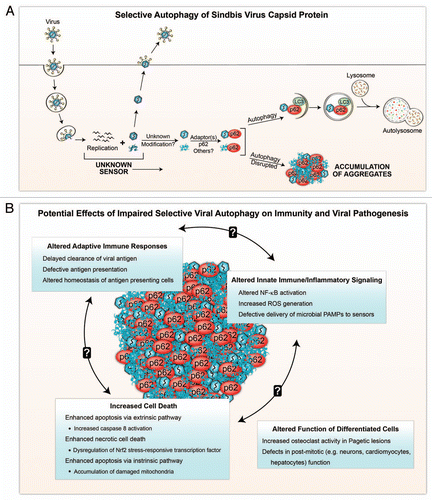Figures & data
Figure 1 Schematic model of selective viral autophagy (A) and the potential biological consequences of viral protein-p62 aggregate accumulation during impaired selective autophagy (B). (A) After entry into the host cell and uncoating, Sindbis virus (SIN) replicates in the cytosol, generating newly synthesized viral nucleic acids and proteins. Autophagy is triggered by an unknown sensor(s) during viral replication, and SIN capsid protein is targeted to the autophagic machinery in a process that requires the selective autophagy adaptor protein, p62. It is unknown whether p62 recognizes free capsid (monomeric or aggregated) or assembled capsid (containing viral or other nucleic acids), whether the targeted capsid proteins undergo modification prior to recognition by p62, or whether interactions with additional adaptor proteins are required for selective autophagy of SIN capsid. Disruption of autophagy results in the accumulation of aggregates of viral proteins and p62 within the host cell. (B) In the absence of selective autophagy, aggregates containing viral capsid and p62 may perturb innate and adaptive immune response, and result in increased cell death and disruption of cellular functions. The processes listed are speculations based on extrapolations from the literature on p62 functions (see text for more detailed explanations). Further studies are required to test these speculations in models of viral infection.
